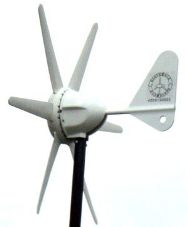Categories: Featured Articles » Interesting Facts
Number of views: 19125
Comments on the article: 4
How to save electricity comfortably
 Due to the constant increase in energy prices, people constantly have to pay a lot for them. They will only get used to the same prices, and it will not seem so much - again the price increase - and again a lot. Well, people, I suppose, could also save energy. And enterprises do not have to save - you need to work.
Due to the constant increase in energy prices, people constantly have to pay a lot for them. They will only get used to the same prices, and it will not seem so much - again the price increase - and again a lot. Well, people, I suppose, could also save energy. And enterprises do not have to save - you need to work.
But to whom it is not enough just to save - it is necessary to produce. You can do everything! What you want. You can, for example, buy a house. And you can build it yourself. And a car. And you can and the power plant.
You don’t have enough energy - you can buy a windmill, or solar panels - and get electricity. At many agricultural enterprises, and not only on them, it is possible to actively save precious electricity.
The recovery system on electric trains is taken into account by a separate meter. And there are routes when the train returns to the power grid as much energy as it spent on the trip! A train with empty wagons consumes much more electricity than a laden one!
Empty cars are light and with a huge sail. And the wind is never fair. As a result, the motors are constantly working to accelerate. “Drag him like hell by the hair!” - says the driver.
A loaded train is a completely different picture: the wind flows around full wagons, and there is a huge moment of inertia of a heavy car on rails - it travels several kilometers on the coast.
 In general, soon all the wheels of the machines will be profitably replaced by a motor - wheels, because only the brake pads will not wear out, and the braking energy will turn into a stored electric one.
In general, soon all the wheels of the machines will be profitably replaced by a motor - wheels, because only the brake pads will not wear out, and the braking energy will turn into a stored electric one.
Saving gasoline per trip 30-40%. Plus, riding at low speeds on electricity. Doubles engine life. Do not pull it in minor rebuildings, but only include it if you travel far and long.
There is little space in the trunk - remove the batteries in the carrying case on the roof. To cover a car with solar panels at least from above is not a lot of current, but only at first glance. This is not a cabin overheating plus all electrical appliances will work for you for free.
You can still put a windmill on the roof. Not to the car, of course, to the house where you live. Now they make almost eternal unattended military technology.
You can live somehow, but you can comfortably. You can constantly pay for comfort, but you can invest money and make a profit. And not in someone else’s company, but in his own. Stingy? Sit and save. And if you want - think and be rich!
Some ideas to continue:
Home-made wind generator and its industrial analogues
Home-made mini-hydroelectric power station and its industrial analogues
See also at bgv.electricianexp.com
:
